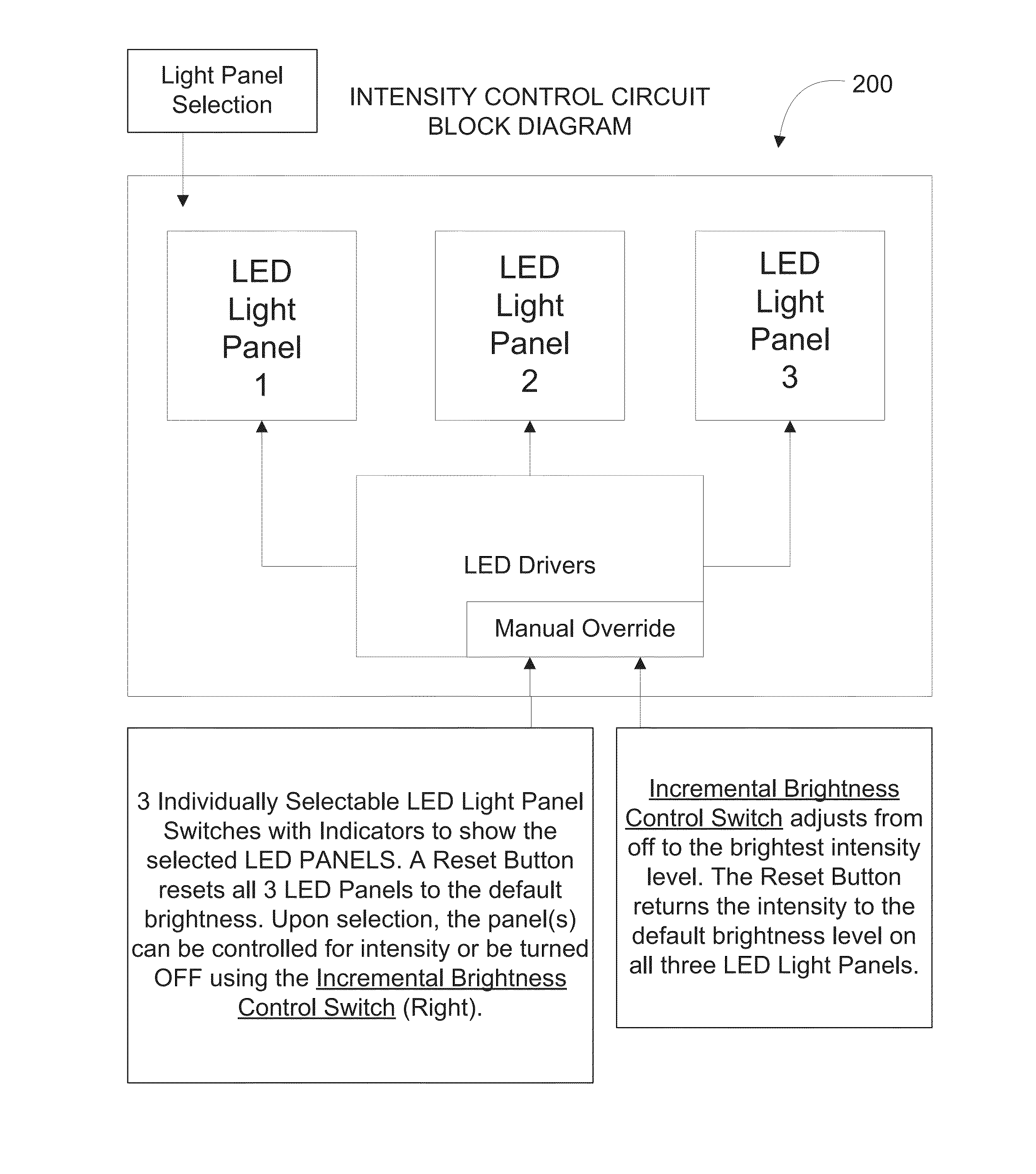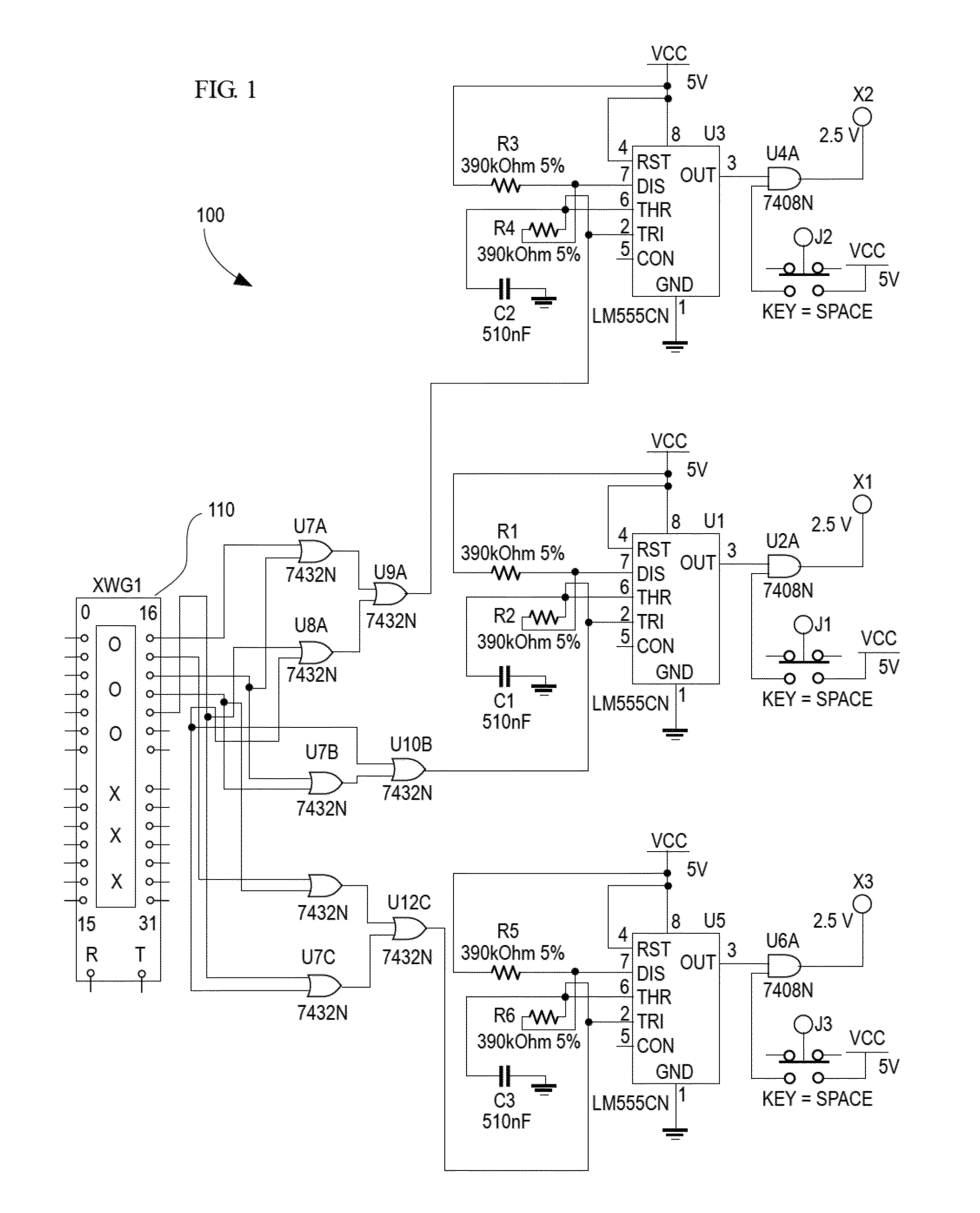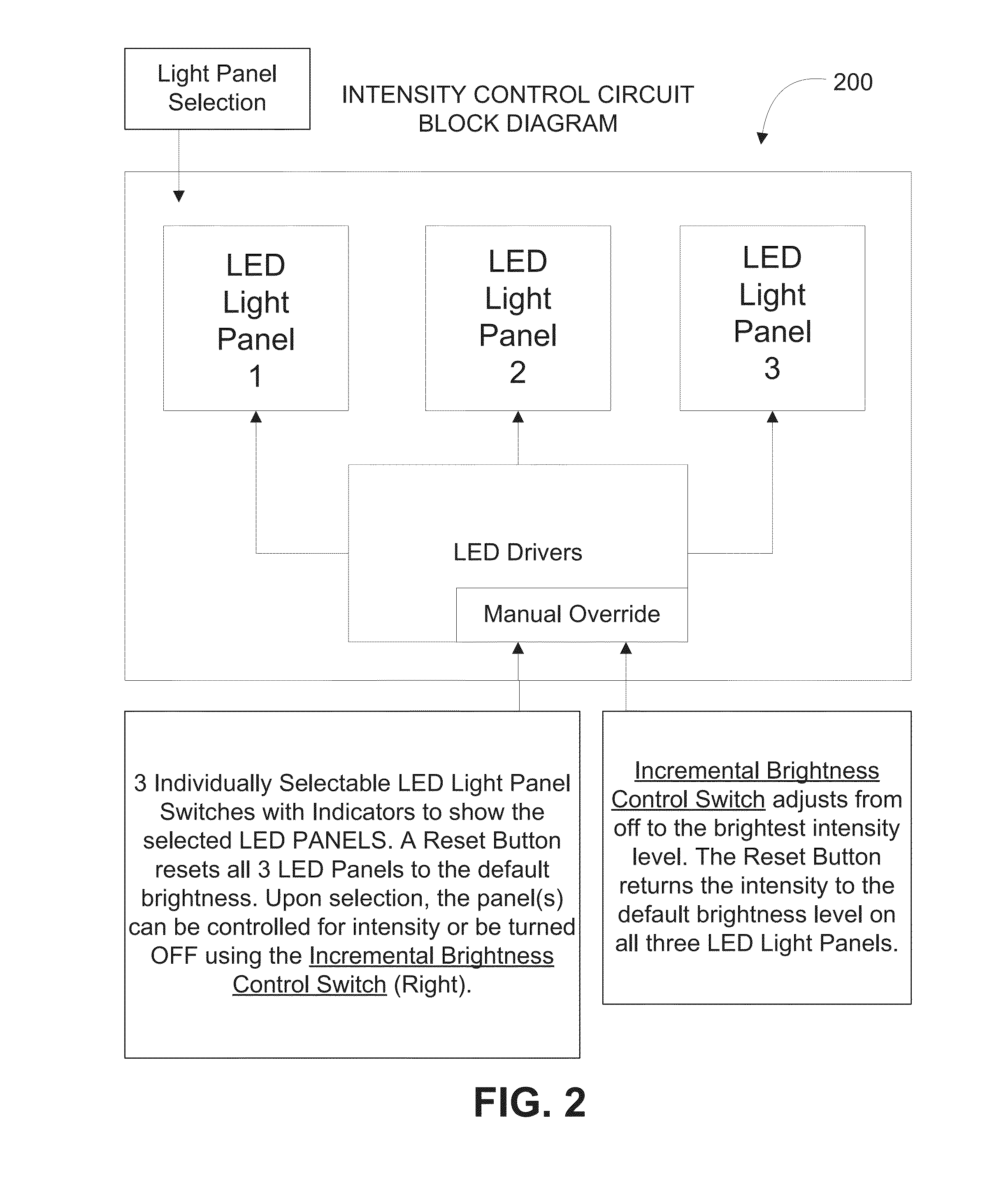However, conventional lighting systems lack advanced control over light sources to direct and rotate light panels to vary the beam angles of the light panels horizontally and vertically, to vary intensity of light panels, and to vary color of lighting panels within a
light fixture.
Conventional lighting also lacks an ability to control light panels in selected light fixtures or in selected groups of an array of light fixtures.
Additionally, conventional lighting systems lack a plurality of light panels with
servo motors,
stepper motors, other motors, solenoids, gears, and / or similar mechanisms to direct light in varying forward and
peripheral directions to shine light forward from a
light fixture, through the
peripheral sides, or to the back of a light fixture.
Similarly, such conventional lighting systems fail to include light panel rotation of between 180 degrees and 360 degrees to allow light panels to shine light forward, through the
peripheral sides, or towards the back of a light fixture.
Existing products do not allow a user to save different light intensities, light panel rotation, direction of illumination,
monochromatic color for illumination, multicolor light panel illumination configurations, and / or duration of illumination from a light source in memory that can later be scrolled through, recalled and utilized.
Additionally, existing products do not allow a user to rotate light panels to a desired position for illumination, settings relating to such being savable in memory that can later be scrolled through, recalled, and utilized.
Additionally, existing products cannot allow changing color emanating from one or more multicolor light panels within a light fixture, program shining a desired color frequency where and when desired, saving different colors in memory along with a duration for displaying each color, using a timing circuit for when the colors may change, how long each color may be displayed, and to have the ability to step through saved settings and cycles to allow a light fixture or light panel to shine a desired color for a saved time interval.
A problem with conventional lighting systems is that most lighting fixtures are not sufficiently energy efficient due to obsolete light sources.
Existing products lack the
intelligent control ability to direct light as might be desired through advanced logic and circuitry making use of
stepper motors,
servo motors, solenoids, programmable controls, mechanisms and assemblies.
Additionally, existing products lack the ability to intelligently direct the position of lighting panels through default, programmed and / or through user-defined settings.
Moreover, existing products lack the ability to intelligently fine tune lighting direction and intensity through programmed and user-defined settings.
While existing devices may be suitable for the particular purpose to which they address, they are not as suitable for providing
stepper motor assisted advanced
intelligent lighting systems where light sources are integrated in electromechanically pivotal-rotatable light panels in a fixture to provide light with a
wide field of coverage with advanced default, and
user defined, selected, and / or programmed directional and intensity settings.
Further, existing devices do not provide sufficiently advanced control over light sources and light fixtures to direct and rotate light panels within one or more light fixtures, vary beam angles of the light panels horizontally and vertically, vary the intensity of light panels, and vary the color of lighting panels with various advanced controllers to create different lighting systems including wired and
wireless lighting systems and their respective controls, including computer controlled lighting systems and lighting systems controlled from mobile phones, remotes, or other digital devices for a wide variety of applications.
 Login to View More
Login to View More  Login to View More
Login to View More 


